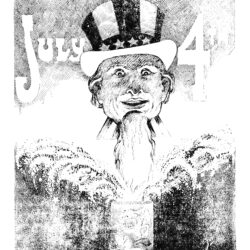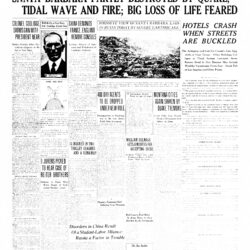
I remember playing boxball, stoop ball, and penny ball in 1940s Brooklyn

 All you needed was a round, pink ball and one other person. In some sections of Brooklyn, the balls were called pinkies. Ours were “spauldeens,” and the numbers of games one could play with them were astounding.
All you needed was a round, pink ball and one other person. In some sections of Brooklyn, the balls were called pinkies. Ours were “spauldeens,” and the numbers of games one could play with them were astounding.
Over the next few months, I will be devoting this space to the games we used to play. Your thoughts, memories, comments are invited.
Let’s start with boxball. For this one, players needed another person and three squares of cement sidewalk. It was miniaturized tennis without the racquets. Your hand was your racquet. One person served, the other hit it back. It sounds boring; it seemed to have no challenge to it. But if that’s what you thought, you’d be dead wrong and a loser.
The game started with one person serving. Sometimes you flipped a coin for service, sometimes you played a game for it. There were very few rules. The first was the ball had to stay within the lines; the second was every serve had to pass through the center box.
Spauldeens, especially new ones, had enough compressed air pumped into them that they were hard enough to sting when you slapped them and had some real giddy-up as well.
In addition, the surface of the ball (the skin) was not smooth like a marble, nor was it so rough that it wasn’t smooth. It was rubber and therefore different in texture from, say, a plastic ball and different from the dimpled surface of a basketball. A good boxball player could make the ball slice left or right, jump forward, almost stop short, or the player could just smash the thing so hard it hit the middle box and flew by you before you saw it coming.
And like a good tennis player, a good boxball player was an ace at putting the ball in the far corners of the middle box, so that in attempting to return it you looked like a ball player who put his all into what he was sure was a fast ball and corkscrewed himself into the ground because it was a 77 mph change up.
Depending on when you started the game (i.e. how close to dinner) was how long you played. If you were evenly matched you could play ball for hours or until it felt like your arm was going to fall off onto the cement.
Sometimes you’d switch to a form of gambling that was easier on the arm. In our neighborhood, we called it penny ball even though every so often a quarter slipped in, and if you really wanted a challenge you played with dimes. This was penny ball (no matter what coin you were playing with).
This was one of the wonders of growing up in Brooklyn. Most every place had sidewalks. All the sidewalks were divided the same way. You never had to go very far to find a candy store that sold a spauldeen.
If you got tired of box ball but not tired of playing, all you had to do was reach into your pocket, find a coin, and put it in the center of the middle box. It was now equidistant from each player. The object? Hit the coin. If it flipped, it was yours. Simple right? Not so much. Thus, it was frustratingly possible to “hit the nail on the head” and get nothing for your efforts.
The ball was always tossed overhand. Mechanics was everything, just like in pitching. You not only had to find the right balance for the ball in your hand — hold it in your palm? Hold it between your thumb and forefingers? Maybe thumb and middle finger? Or with the tips of all your fingers? Once you had that worked out in your mind your forearm and shoulder came into play. How one made those things get the ball on its way — angle, speed, force, arc — all determined how close to the coin you got.
Since the coin had to move when it was hit, there were times you could swear — literally and figuratively — that you had hit it. But the proof was in the puddin’. No movement, no winner. It was not an easy way to score some extra change.
Read about Coney Island’s first annual Brooklyn Stickball Challenge, which took place in 2016.
And you never wanted to play with someone older than you. Older guys had longer arms. Longer arms meant the ball started closer to the coin. We had one guy on the block who had arms like a giraffe’s neck. He could lean over and almost drop the ball onto the coin. Didn’t matter at all about his grip or mechanics. We didn’t play much with him.
Here’s a game that is an all-time classic: stoop ball. Since this is the Brooklyn Eagle I’m writing for, I certainly do not have to explain what a stoop is, or that you didn’t have one if you lived in an apartment house, or that if you lived in an early 1900s wood house with wide, round edged steps you had a stoop but one that wouldn’t work for stoop ball. The premier stoop for stoop ball was, survey says, brick. Not far behind was cement.
Remember all that air pumped into a spauldeen? Well, if you threw it so that it hit the edge, or lip of the step, called “a pointer” for reasons I can’t explain, the ball took off like a shot. An inch below the edge and the ball bounced down and sans an error it was an easy ground out. Hit slightly above the edge and the ball went backwards. Hit the step above and depending on speed and angle it might fall for a bloop single or mostly an easy fly out.
There was an additional problem when you missed high. If you played at a house that already had its storm door up, the ball hit the glass with a sound that radiated through the interior of the house, bringing yells from mother that came back out the other side of the glass — unless, of course, the glass had gotten busted. Uh oh.
And then there were times you couldn’t hit it right to save your life. The ball came off the stoop like it had been spit out of someone’s mouth and dribbled past your ankles. Three of those and you’d struck out.
But hit that sucker right and that ball went wondrous distances for extra bases or a homer. And yes, there was strategy. Any of the steps was fair game. Nor did you have to use the middle of the stoop. Neither were you obligated to throw with all your might. A matter of inches or less, to the right or left, put the ball in a different place and got it there at a different speed. If the fielder guessed wrong, he ended up chasing the ball.
Since the game usually was played by two people, nine innings or even seven were a good workout.
All this and we were never more than three minutes from the dinner table. How can you beat that?
Bill Gralnick is the author of “The War of the Itchy Balls and Other Tales from Brooklyn.” His writings can be found at https://www.williamgralnickauthor.com/.
Leave a Comment
Leave a Comment






